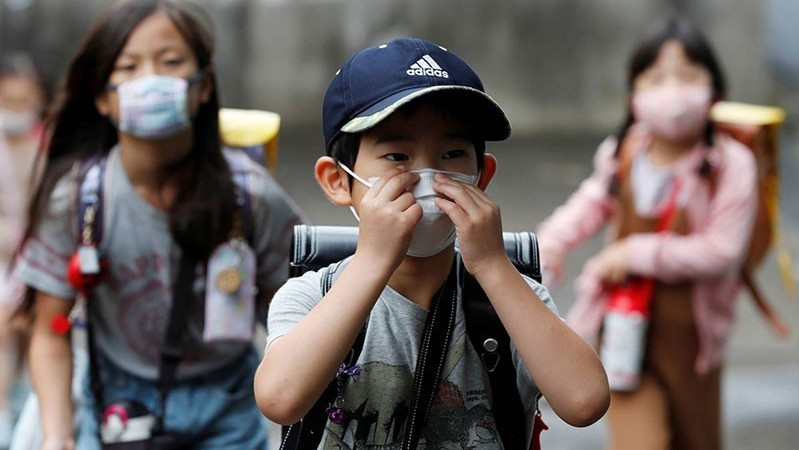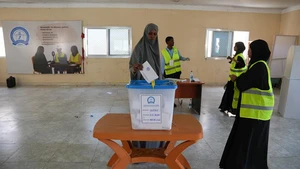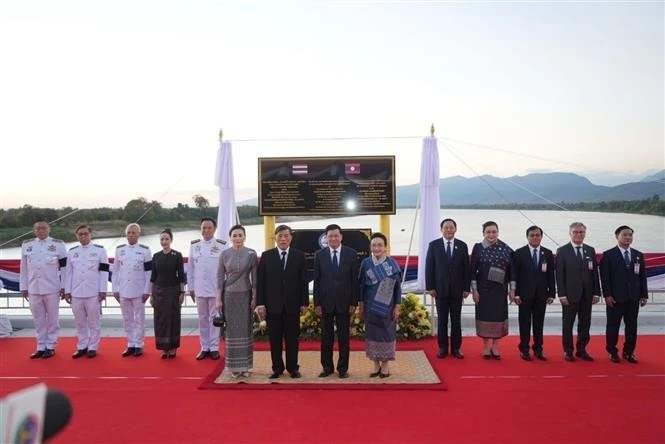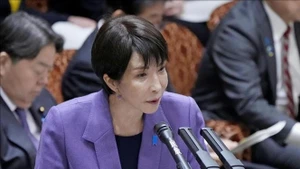Looking at the global demographic picture, there are distinctly contrasting colours in Asia. The world population just passed 8 billion, showing significant progress in protecting public health and extending people's life expectancy. The United Nations predicted that India will overtake China as the world's most populous country by 2023.
India is also one of the countries with the youngest population in the world, with more than 27% of the population between the ages of 15-29.
However, in contrast to India, which is facing a “whirlwind” of population, a series of other Asian countries such as China, the Republic of Korea, and Japan, have a headache dealing with the record low birth rate, in addition to the problem of population ageing, which causes many consequences for socio-economic development.
The pressure of the demographic crisis
Japan is grappling with a plummeting birth rate. Experts warned that this situation threatens to erode national strength. According to the latest statistics of the Ministry of Health, Labour and Welfare of Japan, in 2022, the number of children born in the “Land of the Rising Sun” will be below 800,000 children per year for the first time, the lowest level ever.
The sharp drop in the number of newborn babies not only reflects lifestyle changes under the impact of the COVID-19 pandemic, but it’s also an urgent social issue in Japan. Japan's Chief Cabinet Secretary affirmed that the birth rate is falling at an alarming rate and the government will make every effort to implement a comprehensive response.
The situation in another Northeast Asian country, the Republic of Korea, is no better. Statistics Korea has released data showing that the number of children born in the country in 2022 is at an all-time low, while the number of deaths is higher than the number of births for the third year in a row.
A total of 249,000 babies were born in 2022, down 4.4% from the level recorded in 2021. The fertility rate, which reflects the average number of children a woman has in her lifetime, in 2022 was 0.78. This is the lowest level since 1970. Experts estimated that the RoK population will naturally decline by 200,000 or more from 2038.
Meanwhile, China's population decreased for the first time since 1961. The National Bureau of Statistics of China said that by the end of 2022, the population of China will be 1.41175 billion people, a decrease of 850,000 people compared with a year earlier. The average birth rate in 2022 is 6.77 per 1,000 people, a record low in China.
There are several reasons for low birth rates in Asian countries. More and more young couples are delaying or deciding not to have children amid the economic downturn and high house prices. In 2022, the average age of pregnant women in the RoK was 33.5 years old, an increase of 0.2 years compared to 2021.
Professor Masahiro Yamada, an expert in the field of family sociology at Japan's Chuo University, said that compared to 30 years ago, today's young generation is increasingly worried about the future. They go out into society with many heavy thoughts such as difficulty in finding a job, and uncertain income due to the impact of the current volatile economic situation. This makes them feel insecure when planning to have children.
In addition, some young people have the concept of prioritizing individual freedom, so they tend to pursue celibacy, and avoid marriage or having children. According to a survey result, up to 53.2% of female respondents aged 20-34 in the RoK said, that getting married and having children is not important to women.
The low birth rate and declining population will inevitably have consequences for the economy, including the risk of a labour shortage, a decrease in the number of taxpayers and pressure on the pension system. The increasing cost of social security will put great pressure on the shoulders of the younger generation.
Birth promotion policy
Japanese Prime Minister Kishida Fumio has recently pledged to urgently tackle the plummeting birth rate. The Japanese government is planning to double its child-rearing budget, focusing on three pillars of economic support, improved childcare services and welfare reform. The government is also considering improving parental leave. This policy is expected to encourage births and prevent population decline, in the coming years in Japan.
In the RoK, the Ministry of Health and Welfare has approved a five-year plan to expand childcare support policies. Accordingly, Korean couples raising children under 1 year old will be provided with 700,000 won per month. The RoK Ministry of Education has just announced a plan to merge kindergartens and daycare centres. After that, every Korean child from 3-5 years old will enjoy free education.
Not only trying to prevent the decline of the birth rate, these countries are also focusing on filling the human resource gap. The RoK Ministry of Employment and Labor has announced a plan to amend the recruitment licensing regime for foreign workers, according to which conditional privilege is applied, so that the residence time lasts from 4 years and 10 months, up to 10 years. This move aims to promptly support businesses that are "thirsty" for human resources, reducing difficulties that the labour market is facing.
Japan also eased residency permit conditions for skilled foreigners. Specifically, Japan will issue “high-skilled professionals” visas to those who earn at least 20 million yen a year and hold a master's degree or higher or earn at least 20 million yen a year and 10 or more years of work experience. Meanwhile, for many years, China has promoted a policy to encourage Chinese students to return to their homeland to work.
Improving the low birth rate is not easy, especially when the outlook for global economic growth, in general, is still precarious and potentially risky, directly affecting families' birth plans. Initiatives to further reduce the financial burden on parents, and support social security are essential to encourage births, contributing to averting the risk of the demographic crisis spreading in the region.
















